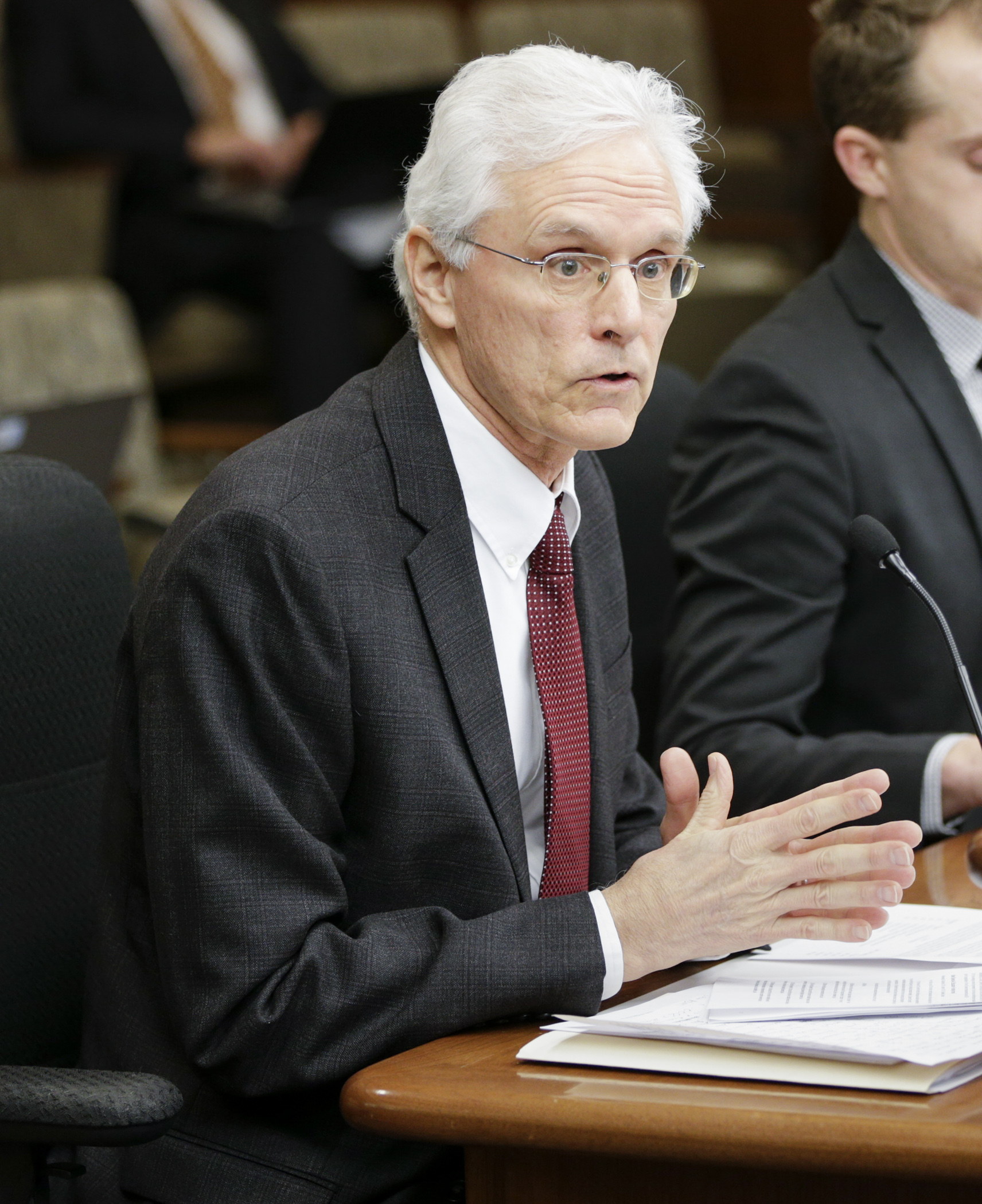Statewide special education expense averages rise, committee hears
Teaching students with special needs comes with its share of challenges and successes; it also comes with a price tag.
The House Education Innovation Policy Committee Tuesday reviewed statewide averages associated with special education costs as well as recommendations for funding adjustments. No action was taken.
A special education expenditure report is prepared annually by the Department of Education using the Dec. 1 child count of the previous fiscal year. Disabilities are categorized by primary disability area in order to monitor the costs associated with each.
Over the previous year, costs have risen on average from 2.69 to 3.7 percent depending on the disability category.
 Tom Melcher, director of the program finance division at the Minnesota Department of Education, gives members of the House Education Innovation Policy Committee, a report on the department’s Special Education Statewide Average Expenditure during their Jan. 31 meeting. Photo by Paul Battaglia
Tom Melcher, director of the program finance division at the Minnesota Department of Education, gives members of the House Education Innovation Policy Committee, a report on the department’s Special Education Statewide Average Expenditure during their Jan. 31 meeting. Photo by Paul Battaglia“Increases happen due to more districts identifying those with special needs, and we’re proud of that,” said Robyn Widley, the department’s special education director.
In Fiscal Year 2016, the highest disability expense average was severe cognitive disabilities at $50,624 per child; the lowest was other health disabilities category at $6,436 per child. Emotional and behavioral disorders accounted for the largest total, with $280 million in aid serving 14,955 students. Specific learning disabilities accounted for $258 million in state spending and autistic spectrum disorders $212 million. Minnesota receives $193.6 million in federal funding, just shy of 13 percent of total special education costs.
The report recommends increasing the state’s base funding for children who have developmental disabilities from $27,000 to $27,200 per child; from $18,000 to $19,000 for children who are either deaf or who have behavioral disorders; and from $10,400 to $12,700 for children who have autism spectrum disorders and other multiple impairments. The changes would take effect beginning in Fiscal Year 2018,
Special education expenses for school districts are formulated using the Uniform Financial Accounting and Reporting Standards, which monitors financial activity while also accounting for costs of operation. The state provides base funding per child with a disability, but additional resources are allocated accounting for average daily membership, poverty concentration and district size.
Related Articles
Search Session Daily
Advanced Search OptionsPriority Dailies
Speaker Emerita Melissa Hortman, husband killed in attack
By HPIS Staff House Speaker Emerita Melissa Hortman (DFL-Brooklyn Park) and her husband, Mark, were fatally shot in their home early Saturday morning.
Gov. Tim Walz announced the news dur...
House Speaker Emerita Melissa Hortman (DFL-Brooklyn Park) and her husband, Mark, were fatally shot in their home early Saturday morning.
Gov. Tim Walz announced the news dur...
Lawmakers deliver budget bills to governor's desk in one-day special session
By Mike Cook About that talk of needing all 21 hours left in a legislative day to complete a special session?
House members were more than up to the challenge Monday. Beginning at 10 a.m...
About that talk of needing all 21 hours left in a legislative day to complete a special session?
House members were more than up to the challenge Monday. Beginning at 10 a.m...